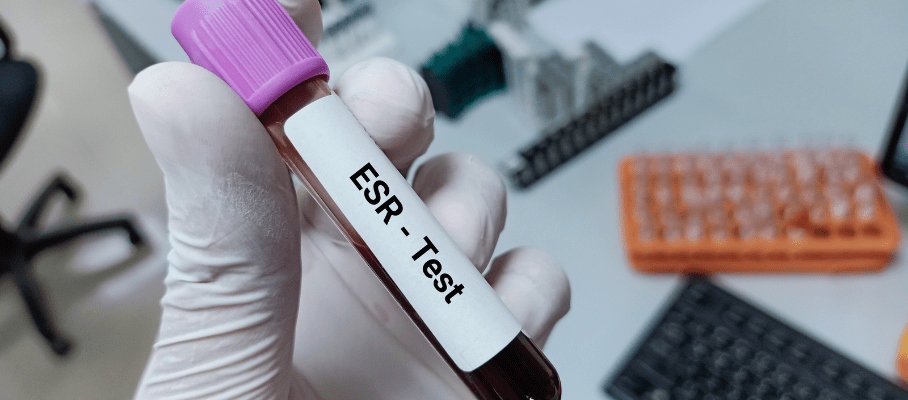Preventive Healthcare
Bone Marrow: Functions, Disorders, and Treatments

Table of Contents
- What Is Bone Marrow?
- What Does Bone Marrow Do?
- Where Is Bone Marrow Located?
- What Does Bone Marrow Look Like?
- What Are the Two Types of Bone Marrow?
- What Is Bone Marrow Made Of?
- What Are Common Conditions and Disorders That Affect Bone Marrow?
- What Are Common Symptoms of Bone Marrow Conditions?
- What Are Common Tests To Check The Health Of My Bone Marrow?
- Is It Painful To Remove My Bone Marrow?
- What Are Common Treatments for Bone Marrow Conditions?
- How Do I Keep My Bone Marrow Healthy?
- FAQs
What Is Bone Marrow?
Bone marrow is a soft, gelatinous tissue that fills the hollow spaces within our bones. It is the primary site of haematopoiesis, the process of blood cell formation.
What Does Bone Marrow Do?
The main function of bone marrow is to produce blood cells, including red blood cells (erythrocytes), white blood cells (leukocytes), and platelets (thrombocytes). These cells are essential for carrying oxygen, fighting infections, and enabling blood clotting.
Where Is Bone Marrow Located?
Bone marrow is found within the cavities of most bones, particularly in the spongy or cancellous portions. In adults, it is primarily located in the flat bones, such as the hip bones, breastbone, skull, ribs, and vertebrae, as well as in the ends of long bones like the femur and humerus. The bone marrow is surrounded by a dense network of blood vessels that facilitate the transport of nutrients and newly formed blood cells.
What Does Bone Marrow Look Like?
Bone marrow has a soft, spongy consistency and varies in colour depending on its type. Red bone marrow, which is actively involved in blood cell production, has a reddish hue due to the presence of many blood-forming cells. Yellow bone marrow, on the other hand, is largely composed of fat cells and appears yellowish. As we age, red marrow is gradually replaced by yellow marrow in many bones.
What Are the Two Types of Bone Marrow?
There are two main types of bone marrow:
- Red Bone Marrow: Red marrow is primarily responsible for haematopoiesis—the production of blood cells. It generates red blood cells, white blood cells, and platelets. In children, most bones contain red marrow, but as people age, much of it is replaced by yellow marrow. In adults, red marrow is mainly found in the pelvis, ribs, sternum, vertebrae, and the ends of long bones.
- Yellow Bone Marrow: Yellow marrow consists mostly of fat cells and serves as an energy reserve. Though it doesn't usually produce blood cells, it can convert back to red marrow under extreme conditions like blood loss or anaemia, helping the body increase blood cell production as needed.
What Is Bone Marrow Made Of?
Bone marrow consists of a complex network of blood vessels, fibrous tissue (stroma), and various cells, including haematopoietic stem cells, fat cells, and supportive stromal cells that provide the necessary environment for blood cell development.
What Are Common Conditions and Disorders That Affect Bone Marrow?
Several disorders can impact the functioning of bone marrow, including:
- Aplastic Anaemia: Bone marrow failure resulting in decreased production of all blood cell types.
- Anaemia: A deficiency of red blood cells or haemoglobin, often due to bone marrow problems.
- Myelodysplastic Syndromes: Ineffective blood cell production, leading to abnormal cell development.
- Leukemia: Cancer of the bone marrow that leads to abnormal white blood cell production.
- Multiple Myeloma: Cancer of the plasma cells in the bone marrow.
- Bone Marrow Fibrosis: Scarring of the bone marrow that disrupts its normal function.
- Infections: Certain infections, such as tuberculosis or viral infections, can affect bone marrow function.
- Metastatic Cancers: Spread of cancer from other parts of the body to the bone marrow.
What Are Common Symptoms of Bone Marrow Conditions?
Common symptoms of bone marrow disorders include:
- Fatigue and weakness
- Frequent infections
- Easy bruising or bleeding
- Bone pain
- Unexplained weight loss
- Enlarged spleen or liver
What Are Common Tests To Check The Health Of My Bone Marrow?
To assess the health of your bone marrow, your doctor may recommend the following tests:
- Complete Blood Count (CBC): A blood test that measures the levels of red blood cells, white blood cells, and platelets in your blood.
- Bone Marrow Aspiration and Biopsy: A procedure in which a sample of liquid bone marrow and a small piece of bone are removed for examination under a microscope.
- Flow Cytometry: A technique that analyses the characteristics of cells in a bone marrow sample, helping to identify specific cell types and abnormalities.
- Genetic Testing: Molecular tests that detect genetic changes associated with certain bone marrow disorders.
- Imaging Tests: MRI, PET, or CT scans can help assess abnormalities in the bone marrow or surrounding bone structure and identify any abnormalities or tumours.
Is It Painful To Remove My Bone Marrow?
Bone marrow aspiration and biopsy procedures are typically performed under local anaesthesia, which numbs the area. While you may feel some pressure or brief discomfort during the procedure, most patients tolerate it well. Some soreness or bruising at the biopsy site may persist for a few days after the procedure, which can be managed with pain relievers as needed.
What Are Common Treatments for Bone Marrow Conditions?
The common treatments for bone marrow conditions include:
- Chemotherapy
- Radiation therapy
- Bone marrow transplant
- Targeted therapy
- Immunotherapy
How Do I Keep My Bone Marrow Healthy?
To maintain healthy bone marrow, consider the following tips:
- Eat a balanced diet rich in fruits, vegetables, and lean proteins
- Exercise regularly to maintain bone strength and overall health
- Avoid smoking and excessive alcohol consumption
- Stay up to date with recommended health screenings
- Manage chronic conditions, such as diabetes or high blood pressure
At Metropolis Healthcare, we offer a range of diagnostic services, including bone marrow tests, to help you assess your bone marrow health. Our expert team of pathologists and technicians employs state-of-the-art technology to provide accurate and reliable results. By taking proactive steps to monitor your bone marrow health and seeking timely medical advice when needed, you can work towards maintaining optimal well-being.
FAQs
Can you live without bone marrow?
No, you cannot live without bone marrow. It is essential for producing blood cells that carry oxygen, fight infections, and enable proper blood clotting. Without functional bone marrow, a person would not be able to survive.
Can I donate bone marrow?
Yes, you can donate bone marrow by joining a registry, getting tested for tissue type, and donating via peripheral blood stem cells or a bone marrow harvest if matched with a patient.
How much bone marrow is in the human body?
In adults, active bone marrow is primarily found in the flat bones (hip bones, breastbone, skull, ribs, and vertebrae) and the ends of long bones (femur and humerus). The amount of bone marrow varies depending on age and individual factors.
Is bone marrow good?
Yes, bone marrow is essential for maintaining good health. It plays a crucial role in producing blood cells, which are vital for carrying oxygen, fighting infections, and enabling proper blood clotting.
Can bone marrow have stem cells?
Yes, bone marrow contains haematopoietic stem cells that can become red and white blood cells or platelets. These cells are key to treating blood disorders and cancers.






























